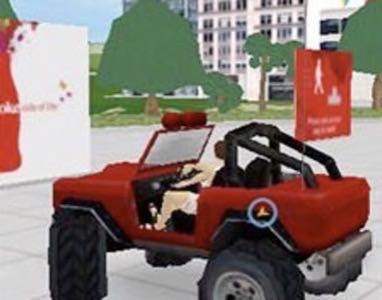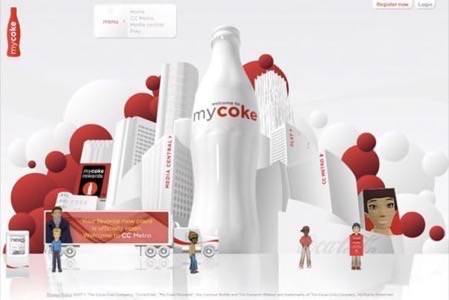The NY Times reports today about Coca-Cola’s new virtual world website. Coke has set up an island called CC Metro in the virtual world There.com (a similar site to SecondLife, but with more controls). NYT reports that at CC Metro, Coca-Cola customers can set up avatars, and “buy clothing and accessories for their avatars using reward points culled from codes on Coke bottle caps”. The site also lets users upload videos, create music mashups and play games. You can access this at MyCoke.com.

As PaidContent notes, Coke has been busy tapping into social media over the past couple of years. It ran a YouTube-like video channel, The Coke Show (which closed last summer), began a $1 million branding campaign on MySpace, and is currently working on two marketing programs with Facebook. Also we’ve noted in the past on RWW how Coke has adopted web 2.0 trends – e.g. Coke Poland’s 43Things clone.
NYT points out that “Coke was an early mover in the realm of virtual worlds, viewing them as ways to engage their customers and build their brands.” Five years ago, the soft drink giant opened a world called Coke Studios on myCoke.com.
Interesting though, Coke has been using the Web as a ‘virtual world’ since the very beginning. In 2004 I wrote an article for Digital Web Magazine, noting that Coca-ColaÄôs Web site in 1996 was styled as a Äúvirtual museumÄù. Back then Coke presented its Web site as a ÄúworldÄù of games and entertainment, a Äúplace to beÄù. Screenshots after the jump…
Coke website 1996

MyCoke website 2007

Conclusion: Nothing’s Changed…
It’s funny how for all the talk of web services, APIs, open data, personalization and the like – web experiences are still just as much about virtual worlds and places. I wrote in the 2004 article that “Web sites are no longer virtual places, theyÄôre more like virtual agents.” Well in Coke’s case, that’s not true – Coke is still trying to be a virtual world!
What’s with the chicken? (lower right)


















